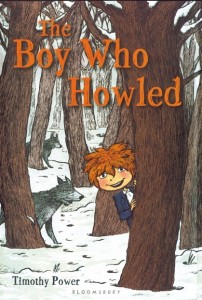 Callum isn’t like other members of his family. He can’t run through the forest on all fours, he can’t bring down deer with his jaws, and he’s not covered with fur. In fact, his dad is even thinking about eating him.
Callum isn’t like other members of his family. He can’t run through the forest on all fours, he can’t bring down deer with his jaws, and he’s not covered with fur. In fact, his dad is even thinking about eating him.
It’s clear that Callum doesn’t belong with other members of his family, who are all wolves. So when makes his way back to civilization, it’s a bumpy ride. For one thing, even though he’s not a fierce, savage, wild creature, he constantly needs to remind himself that he is. After meeting Mrs. T-G and being treated to breakfast, a haircut, and a de-lousing, he says to himself
I’m fierce, he reminded himself for the millionth time lately. I’m savage. I am a wild thing! (77)
Even though he’s a boy, he is constantly thinking like a wolf. When he meets Lila, he sums her up in lupine terms:
“You’re in the Yellow Level, aren’t you? Lila told Callum in a way that made it seem that he was. Callum didn’t know anything about the Yellow Level, but he supposed she ought to know what she was talking about. There was something very Alpha about her. (98)
And later, when he encounters Mr. Abrams, the substitute teacher at the middle school he finds himself attending, he finds him decidedly lacking in alpha male characteristics.
Honestly, thought Callum, what did Mr. Abrams expect? If he wanted to be treated like an Alpha Male, he ought to act like one. Instead of drooping like a wet leaf of grass, he should stand stiff-legged and tall. His ears should be erect and forward, and his hackles should bristle. That’s the way Dad always did it, and nobody ever talked back to Dad. (113)
Having been raised by wolves almost his entire life, Callum still has enough memories of his early life to adjust to life among humans. But will he find his original family? Can he survive among humans without ending up in jail—or the dog pound? And most importantly, how in the world is he going to survive middle school.
Response
I first picked up this book because the cover made it look like it would be a humorous take on the werewolf craze that is sweeping through the kidlit and yalit world. Instead, what I got was a humorous take on the feral child phenomenon that crops up in the news every once in a while.
The School Library Journal didn’t care very much for this book (you can read their review on Amazon), although it has gotten favorable reviews otherwise. To be honest, I find SLJ’s reviews uneven, but I initially agreed with them: I didn’t like this book. I had done some research on feral children in the past, enough to know that most cases, along with what passes for research in this area, are often hoaxes.
But then I lightened up. I had been in the middle of a stint of very “adult” researching and writing when I came to this book and was viewing it in that frame of reference. Once I relaxed a bit, and approached this book as a middle school student would, I enjoyed it. It’s funny, and clever (as Callum is), and it has definite points of view about humans and how we treat each other. I particularly enjoyed the juxtaposition between the wild and middle school. Maybe these aren’t such different worlds in the end. It’s a good story that doesn’t take itself too seriously. I look forward to Mr. Power’s next book.
You can visit Timothy Power’s website here.
[src]Work Cited[srcp]Power, Timothy. The Boy Who Howled. New York: Bloomsbury, 2010.[/srcp][/src]
https://bookblog.kjodle.net/2011/10/12/boy-who-howled-timothy-power/
